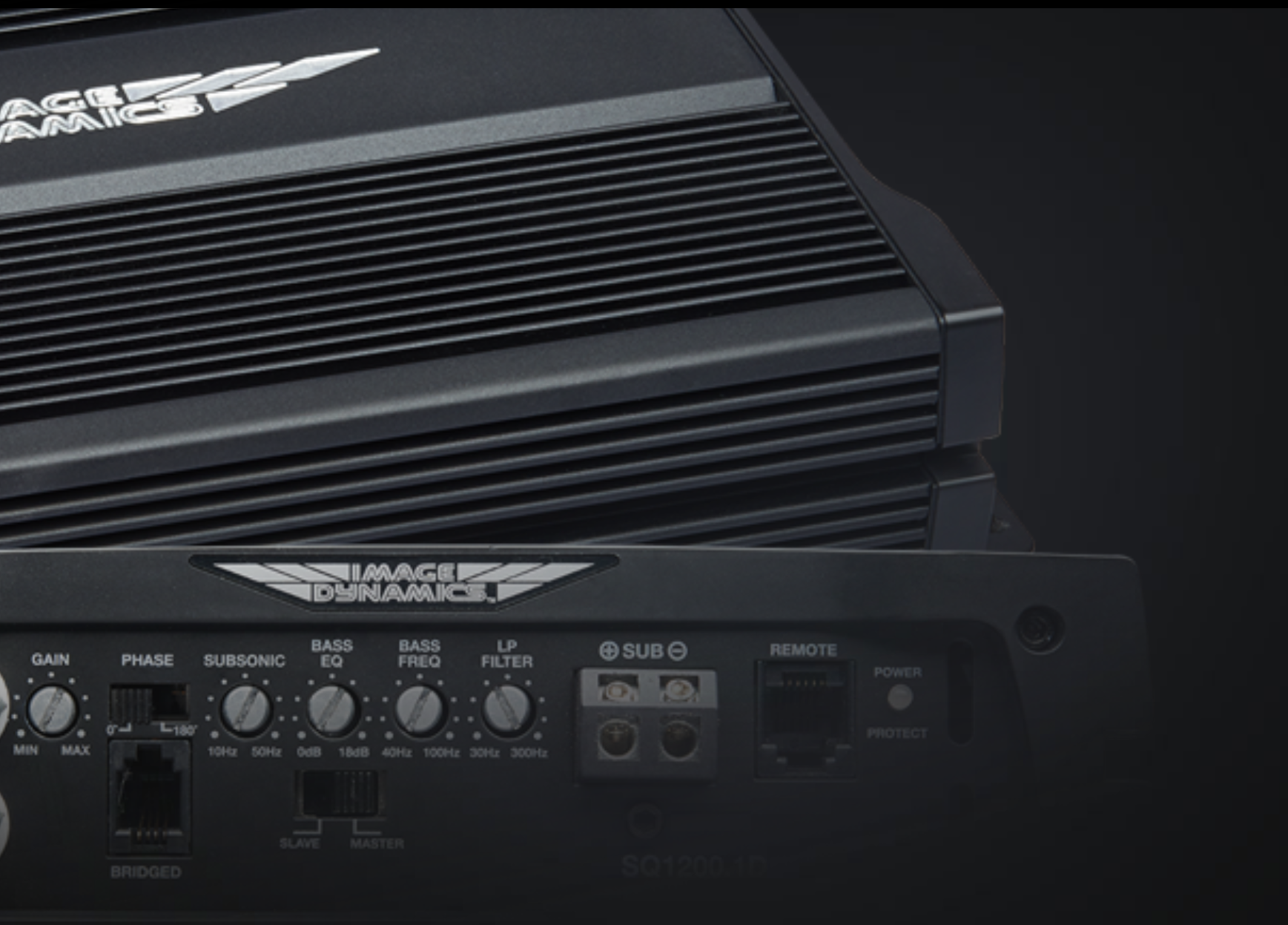Image Dynamics SQ1200.1D 1200W Mono Block Amplifier

Award Winning Products
Experience the cutting-edge performance of our award-winning products

Free USA Shipping $99+
Reliable delivery or pickup from our warehouse in Northern California

30 day Returns
If you don't love it, send it back.

Expert Advice / Support
Unsure about a product?
Call/text us: 707-999-3071
Image Dynamics SQ1200.1D 1200W Mono Block Subwoofer Amplifier
The Image Dynamics SQ1200.1D is a high-performance Class D mono block amplifier, purpose-built to power subwoofers with exceptional efficiency and precision. Delivering up to 1200 Watts RMS at 1 ohm, this amplifier ensures deep, impactful bass for demanding car audio setups. Its compact design, advanced tuning options, and robust construction make it the perfect solution for audio enthusiasts seeking reliable and powerful low-frequency performance.
Key Features
The SQ1200.1D provides robust power outputs of 400W at 4 ohms, 800W at 2 ohms, and 1200W at 1 ohm, ensuring compatibility with a wide range of subwoofers. It features adjustable subsonic and low-pass filters, allowing for precise tuning to achieve clean, distortion-free bass. The 5-way protection circuitry safeguards against thermal issues, over-voltage, under-voltage, and short circuits, ensuring safe and consistent operation. Its high damping factor delivers tight, controlled bass, enhancing the clarity and precision of low-frequency output. Additionally, balanced RCA inputs minimize noise, providing clean signal transmission for superior sound quality.
Performance and Versatility
The SQ1200.1D is designed exclusively for subwoofer amplification and delivers powerful, distortion-free bass. Its Class D efficiency ensures minimal energy loss, converting most power into clean output without generating excessive heat. The subsonic filter eliminates inaudible low frequencies that can strain subwoofers. In contrast, the low-pass filter ensures only bass frequencies are sent to the drivers, resulting in precise and controlled performance. Whether used in a single subwoofer setup or a multi-driver configuration, the amplifier delivers consistent, impactful bass tailored to your audio system's needs.
Compact and Reliable Design
The SQ1200.1D measures 2 inches in height, 12.5 inches in length, and 7 inches in width. Its compact form allows easy installation in tight spaces such as under seats or small trunk areas. Its sturdy chassis construction is built to withstand the rigors of automotive environments, including vibrations and temperature changes. The amplifier’s lightweight design simplifies installation, while the 5-way protection system ensures long-lasting durability and performance. This makes the SQ1200.1D an excellent choice for car audio enthusiasts who prioritize reliability and convenience.
Advanced Features and Customization
The amplifier has adjustable subsonic and low-pass filters, allowing users to tailor the bass response to match their preferences and subwoofer capabilities. Its remote level control provides convenient output adjustments from the driver’s seat, enabling on-the-fly tuning for different listening environments. The high damping factor ensures tight, well-controlled bass, eliminating muddiness and enhancing the clarity of low frequencies. With its advanced protection circuitry, compact design, and precision tuning capabilities, the SQ1200.1D delivers professional-grade performance for subwoofer-focused systems.
Top 10 Features
- High Power Output: This unit delivers up to 1200 Watts RMS at 1 ohm, providing robust and impactful bass for powerful subwoofer systems.
- Class D Efficiency: Maximizes energy efficiency by minimizing heat and power loss, ensuring clean and consistent bass output.
- Subsonic Filter: An adjustable subsonic filter eliminates inaudible low frequencies below 10Hz, protecting the subwoofer from strain and ensuring focused bass performance.
- Low-Pass Filter: Adjustable low-pass filter up to 300Hz precisely isolates bass frequencies, ensuring the subwoofer handles only what it’s designed for.
- 5-Way Protection Circuitry: This protects against over- and under-voltage, speaker shorts, DC offset, and thermal issues, ensuring long-lasting reliability.
- Balanced RCA Inputs: High-quality RCA connectors reduce noise and interference, maintaining clean signal transmission for superior sound quality.
- High Damping Factor: Ensures tight and controlled bass output, reducing distortion and delivering clarity in low-frequency reproduction.
- Compact Design: It measures 2” x 12.5” x 7”, making it ideal for installations in compact spaces, such as under seats or small trunk areas.
- Remote Level Control: Comes with a wired remote for convenient bass level adjustments from the driver’s seat.
- Subwoofer-Optimized Frequency Response: Covers a range of 10Hz to 300Hz, delivering precise and distortion-free bass for subwoofer applications only.
No video available for this product.
Product Highlights



Product Specifications
Image Dynamics SQ1200.1D 1200W Mono Block Amplifier









